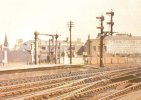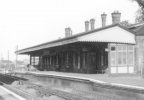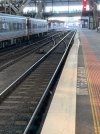John TAYLOR
Western Thunderer
The signal box is now in place and work is going on with re-surfacing the platform.
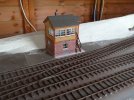
I`ve been working with various thicknesses of card soaked in Shellac, to form the platform and surrounding roadways etc, to which plasticard and some new (to me) products are being used.
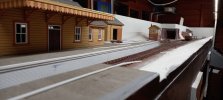
Having used enamel paints for just about everything so far I am making a big move over to the benefits (at least for me) of Acrylic paints in their many guises.
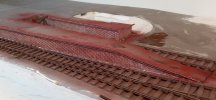
Airbrushed Lifecolor acrylics oversprayed with Tamiya Clear Matt . An acrylic Dulux tester pot `mortar` applied and wiped off in the traditional way.
Platform edging slabs cut from plasticard and hand panted with Tamiya textured pavement grey before gluing in place.
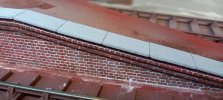
They will be eventually weathered once the rest of the platform surface has been layed....
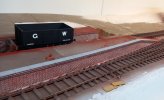

I`ve been working with various thicknesses of card soaked in Shellac, to form the platform and surrounding roadways etc, to which plasticard and some new (to me) products are being used.

Having used enamel paints for just about everything so far I am making a big move over to the benefits (at least for me) of Acrylic paints in their many guises.

Airbrushed Lifecolor acrylics oversprayed with Tamiya Clear Matt . An acrylic Dulux tester pot `mortar` applied and wiped off in the traditional way.
Platform edging slabs cut from plasticard and hand panted with Tamiya textured pavement grey before gluing in place.

They will be eventually weathered once the rest of the platform surface has been layed....


